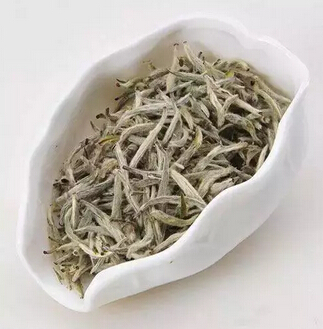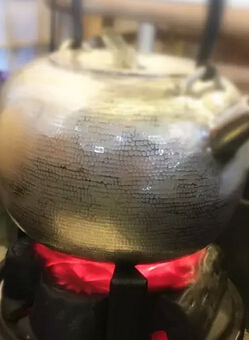We usually drink green tea, black tea, or flower tea, but rarely hear about white tea. In China, tea is classified into six categories: green tea, black tea, yellow tea, white tea, oolong tea, and dark tea. White tea is one of them. According to the British journal Best Nutrition, compared to green tea, white tea retains more nutrients due to its simpler production process.

What is white tea and its benefits?
In China, white tea is less commonly consumed and understood compared to other teas, while in the UK, it is very popular. White tea is made from tender leaves and buds picked in early spring. These young leaves are covered with fine white hairs, hence the name "white tea." Its most distinctive feature is the silvery-white appearance, often described as "green wrapped in white." The tea has plump buds, a bright yellow infusion, a fresh and mellow taste, and tender, even leaves. When brewed, it offers a refreshing flavor and medicinal benefits. Traditional Chinese medicine recognizes white tea as cooling, with heat-reducing and fire-relieving properties.

Types and names of white tea
The main varieties of white tea include Silver Needle, White Peony, Gong Mei, and Shou Mei. Silver Needle, in particular, consists entirely of downy buds that stand straight like needles, making it one of the most visually appealing teas. Its light yellow infusion and refreshing, sweet aftertaste make it a favorite.
Common white tea names: Silver Needle; White Peony; Gong Mei; Shou Mei.

White tea helps prevent heatstroke in summer
White tea undergoes minimal fermentation (10%–30%) and skips frying or rolling, being simply sun-dried or baked. This simplicity preserves more nutrients. Experts note that white tea contains higher levels of polyphenols, natural antioxidants that boost immunity and protect cardiovascular health. It also contains enzymes that aid fat metabolism, regulate insulin, and balance blood sugar.

Additionally, regular white tea drinkers rarely suffer heatstroke. Its amino acids have cooling and detoxifying effects. White tea also has stronger antibacterial properties than green tea. Research by Dr. Milton Schiffenbauer at Pace University found that adding white tea to toothpaste enhances its bacteria-killing ability, promoting oral health.
White tea can be enjoyed cold, becoming sweeter and more refreshing. Unlike other teas, it tastes better when chilled. Here are five groups of people who particularly benefit from white tea:
1. Overweight individuals
White tea aids digestion and inhibits fat accumulation. Its vitamin B1 helps burn fat, making it an effective weight-loss aid when consumed before and after meals.
2. People with high blood sugar
White tea's polysaccharides mimic insulin, lowering blood sugar. Its polyphenols dissolve fats and reduce cholesterol.
3. Young women
White tea's antioxidants (like zinc, manganese, and selenium) brighten skin and combat aging, making it ideal for skincare.
4. Smokers and drinkers
White tea's caffeine detoxifies alcohol, while its polyphenols neutralize toxins from smoking.
5. Those with constipation
White tea cleanses the digestive system, earning it the nickname "internal scavenger."